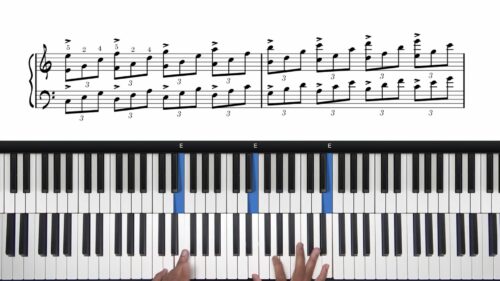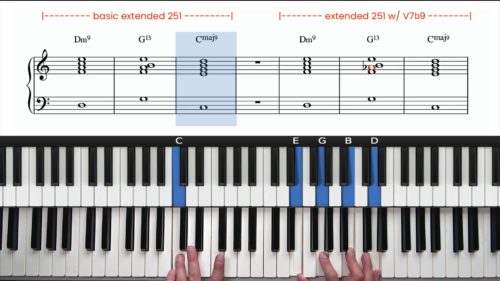Cha-Cha-Cha & Mambo
After our detailed study of montuno patterns in the previous module, we now move onto the other popular grooves that exist in Cuban music.
In this lesson we start by exploring the Cha-Cha-Cha and the Mambo grooves for both solo piano performance and when playing with a bass player. In the next lesson we explore the Wahida and the Guaracha Grooves.
How To Play Cha-Cha-Cha
The Cha-Cha-Cha was invented by Enrique Jorrín in the late 1940s to the beginning of the 1950s. The Cha-Cha-Cha emerged from the mixture of Son and Danzón and has a very distinct rhythm and bass pattern.
We start by analysing the rhythmic elements of the Cha-Cha-Cha bass pattern whilst outlining the tempo in the right hand. We then introduce harmony and voicings and Elio gives advice for playing the Cha-Cha-Cha with a bass player and when playing in a solo piano context.
How To Play Mambo
The Mambo was made popular in 1951 by the Cuban musician Pérez Prado. The Mambo groove has a distinct rhythmic pattern which also emerged from a mixture and marriage between Son and Danzón styles.
We start by playing the Mambo bass line pattern in our left hand and then we tap the casacara rhythmic pattern in our right hand. We then incorporate our right hand to create chordal and arpeggiated versions of the Mambo for solo piano performance.
Lesson Downloads
-
Cha-Cha-Cha Patterns & Comping File Type: pdf
-
Mambo Patterns & Comping File Type: pdf
Practice Tips
-
Learn the Cha-Cha-Cha bass line and practice this whilst tapping the tempo in your right hand as Elio demonstrates.
-
Once comfortable with the Cha-Cha-Cha bass line, introduce the harmony to create a 2-handed groove over a 251 progression in F major.
-
Experiment with the rhythmic embellishments for the Cha-Cha-Cha and also the altered tensions added to the V7 chord in the 251 in F Major.
-
The Mambo bass pattern is similar to the Cha-Cha-Cha bass pattern but the Mambo bass is less syncopated and more grounded.
-
Start by isolating the Mambo bass line, then add the cascara pattern in the right hand, and finally move onto the chordal and arpeggiated versions of the Mambo groove.







